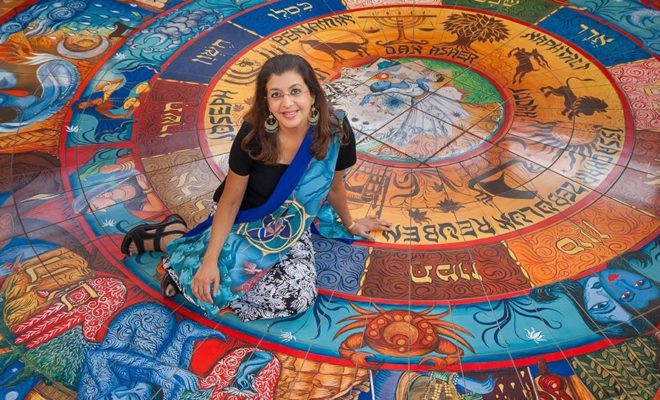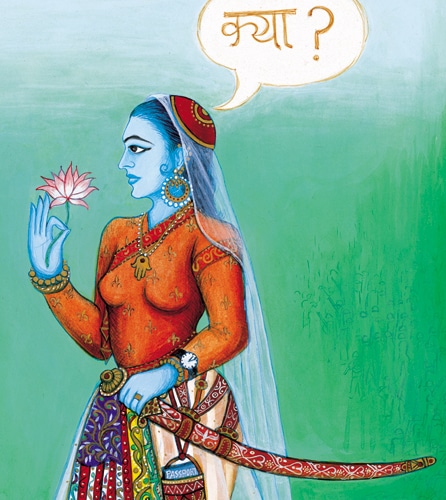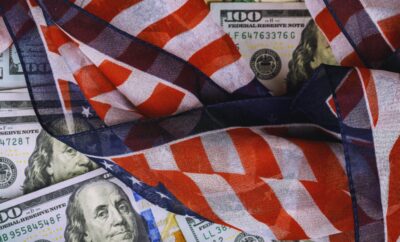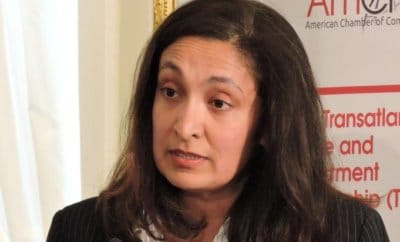Arts
Indian Jews in America: Finding Self in World of Transitions

Siona Banjamin
As a Jewish woman of color, Siona Benjamin’s art reflects her upbringing in India, her life in the United States and the connection she feels to Israel.
Being blue is a symbol of being other. It is also the color of sky and the ocean, so it can belong anywhere and nowhere at the same time ” says Siona Benjamin about Blue Like Me, the upcoming exhibition of her works at William Roland Gallery of Fine Art in California.
Benjamin’s works showcase an eclectic mix of influences in her life as an Indian Jewish woman living in America.
The expressions will also come alive in her new work, Exodus: I See Myself In You, that will be featured as part of the Stations of The Cross exhibition in New York early next year. The event includes 14 artists who highlight the plight of those seeking refuge. Benjamin’s work for the exhibition, I See Myself In You, was born out of following the conflict in Syria, drawing the anonymous and finding herself in fleeing refugees.
As a Jew, Benjamin sees a contemporary Exodus unfolding in the Middle East. The 56-year-old writer-artist evokes her blue characters in her new work again — pointing to her upbringing in India.
“I was not Indian enough in India, and not Jewish enough for European Jews,” Benjamin explains, and this sense of otherness is what her blue characters in her work convey. “How do you survive in an icon-filled country (India) being taught that your Jewish God is abstract and exists in this little flame?”
On the other hand, things that have been popularly ascribed as part of Jewish culture are not practised by Indian Jews. A painting that reflects this is Finding Home: Asnat. In an Indian miniature, Asnat, Joseph’s Egyptian wife, seems to be carrying a passport in her pouch, has a speech bubble over her head saying, “Kya?” (What?). The peripheries of the painting say, “I don’t get Yiddish jokes.”

Finding Home: Asnat, a painting by Siona Benjamin
Benjamin’s art has this amalgamation of styles, religions, languages, mythologies and iconographies presented in ancient Indian and Persian miniatures to Sephardic icons and interestingly, in graphic novel pop art format. Identity, finding home, gender and the concept of “Tikkum Olam” (repair of the world) in Judaism are prevalent in her work.
Raised in Mumbai as a part of the Bene Israel community, the largest of the three groups of Jews that arrived in India over 2,000 years ago, Benjamin was educated in Catholic and Zoroastrian schools. She moved to the United States for graduate school and got master degrees in painting and theater set design. When she moved to the United States, people were bewildered to know that she did not grow up with matzo-ball soup. “And I’d say, ‘no, not really, I grew up with Indian-Jewish coconut curries.’ And they’d say ‘well, that’s so strange…’,” she recounts.
While Indian and European Jews share the same religion, the former community has adapted their customs to their surroundings, like most of them in different parts of the world.
Coconut milk curries, a definite part of south Indian cuisine, made it on table as kosher. For instance, during Hanukkah which was observed on Dec. 20 this year, instead of latke (fried potato pancakes) or sufganiyot (doughnuts), Indian Jews eat food ranging from modak laddoos and puranpoli to pakora and samosa. “Anything that is oil-based,” Benjamin points out. “Hanukkah is a celebration of the oil that never ran out.”
The story of Hanukkah is that in the second century BC, Israel was ruled by the Syrian-Greeks, who tried to force people to accept Greek culture and beliefs. A small band of faithful Jews, led by Judah the Maccabee, defeated them, drove the Greeks from the land, and reclaimed the Holy Temple in Jerusalem. When they sought to light the Temple’s menorah (the seven-branched candelabrum), they found there was only enough oil to last a day. The story goes the light on the menorah lasted eight days — until new oil could be prepared. In keeping with the belief, Indian Jews are strict about using oil-based lamps (Hanukkiyah) while European Jews use candles. Indian Jews also use coconut oil, instead of olive oil.
One ritual that is unique to the Bene Israel community is the malida. It is a unique ritual for the community’s patron saint Elijah, who is believed to have helped the shipwrecked Jews — seven of them– swim to the Konkan coast. The dish malida — made of flattened rice flakes — is sweetened with sugar, mixed with coconut and cardamom, and served with five to seven symbolic fruits. “It’s very strongly in mind about being Indian Jewish,” Benjamin says.
Benjamin was awarded two Fulbright scholarships — one in India where she depicted Jews in the country, and the other in Israel, in which she focused on Jews who had made the aliyah (return to Israel) from India. “What I found during this was that Indians still try to hold on to their Indian Jewish customs, even in Israel,” she said. “I attended a wedding in Tel Aviv that was like a Bollywood party!”
Her project featured an Indian Jewish bride with henna on her hands, which is something unusual among the Jewish community in the United States, but is a regular practice for those in India.
Benjamin’s art seeks to challenge understanding of identity and race, and the misconceptions that lead to racism, hate and war. “In this transcultural America I feel a strong need to make art that will speak to my audience of our similarities, not our differences as I feel I can contribute to a much-needed “repair” (Tikkun) through my art,” she says on her website.
(Blue Like Me will be showcased from February 15 to April 12, 2018 at William Roland Gallery of Fine Art in California. Exodus: I See Myself In You will be showcased as part of Stations of The Cross, New York from Feb. 14. To April 1.)




You must be logged in to post a comment Login